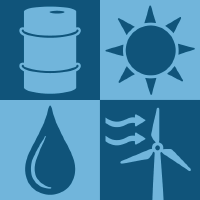Topic Menu
► Topic MenuTopic Editors


Waste-to-Energy
Topic Information
Dear Colleagues,
Due to rapid economic development and urbanization, huge amounts of resources and energy have been expended annually worldwide, resulting in the generation of solid waste in a big quantity, high-intensity energy consumption, and a number of environmental problems. The traditional approach to the disposal of waste in landfills may not be cost-effective or sustainable in the long term within a city environment. Waste-to-energy approaches, with due consideration given to energy recovery, resource recovery, and volume reduction in waste may be an attractive and viable alternative. Energy recovery from waste could help to alleviate the rapidly increasing energy demand. Therefore, there is an urgent need to develop waste-to-energy technologies and systems for energy recovery from city waste, reduce energy reliance on traditional fossil fuel sources and its emission of pollutants, raise the level of energy self-sufficiency, and, at the same time, provide sustainable waste management solutions. This Topic is designed to attract the latest developments in sustainable waste-to-energy technologies, emerging technologies for resources recovery, and low-carbon biotechnologies and bioenergy systems. The editorial team strongly encourages papers providing original research articles, review articles, and case studies, dealing with but not limited to the following research areas:
- Anaerobic digestion technologies;
- Microbial biorefinery for biofuels production;
- Pyrolysis/gasification for bioenergy recovery;
- Waste-to-energy systems;
- Resource recovery from residual waste;
- Biomass energy.
Dr. Jingxin Zhang
Dr. Le Zhang
Topic Editors
Keywords
- anaerobic digestion
- biogas
- biomass
- solid waste
- pyrolysis
- gasification
- waste-to-energy
- bioenergy
- syngas
- biochar
Participating Journals
| Journal Name | Impact Factor | CiteScore | Launched Year | First Decision (median) | APC |
|---|---|---|---|---|---|

Energies
|
3.0 | 6.2 | 2008 | 17.5 Days | CHF 2600 |

Fermentation
|
3.3 | 3.8 | 2015 | 15.7 Days | CHF 2100 |

Materials
|
3.1 | 5.8 | 2008 | 15.5 Days | CHF 2600 |

Resources
|
3.6 | 7.2 | 2012 | 33.4 Days | CHF 1600 |

Sustainability
|
3.3 | 6.8 | 2009 | 20 Days | CHF 2400 |

MDPI Topics is cooperating with Preprints.org and has built a direct connection between MDPI journals and Preprints.org. Authors are encouraged to enjoy the benefits by posting a preprint at Preprints.org prior to publication:
- Immediately share your ideas ahead of publication and establish your research priority;
- Protect your idea from being stolen with this time-stamped preprint article;
- Enhance the exposure and impact of your research;
- Receive feedback from your peers in advance;
- Have it indexed in Web of Science (Preprint Citation Index), Google Scholar, Crossref, SHARE, PrePubMed, Scilit and Europe PMC.

